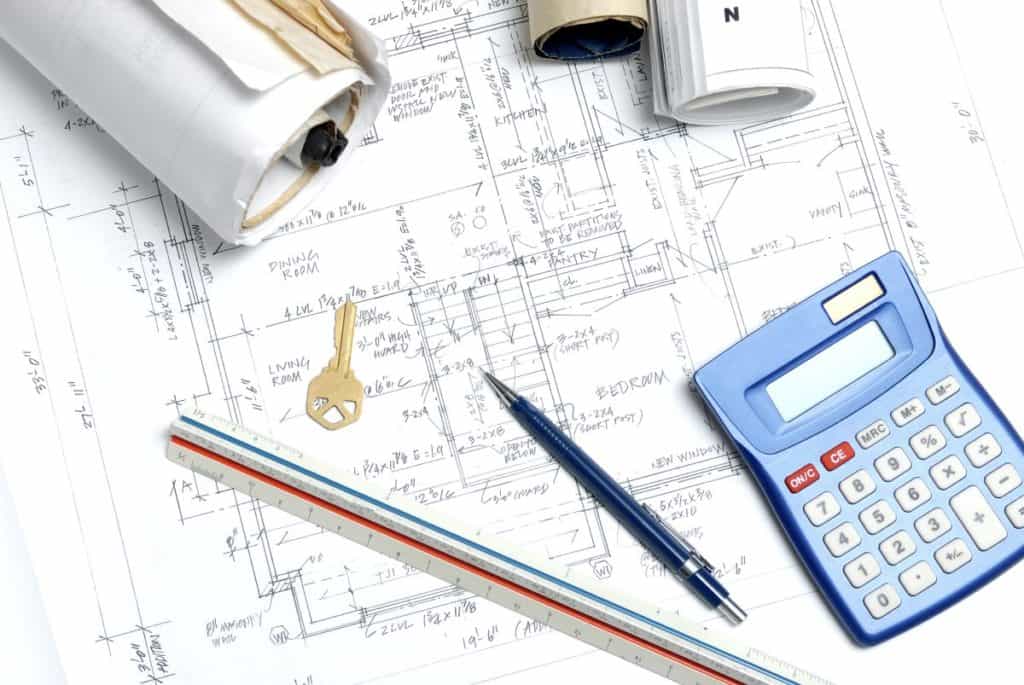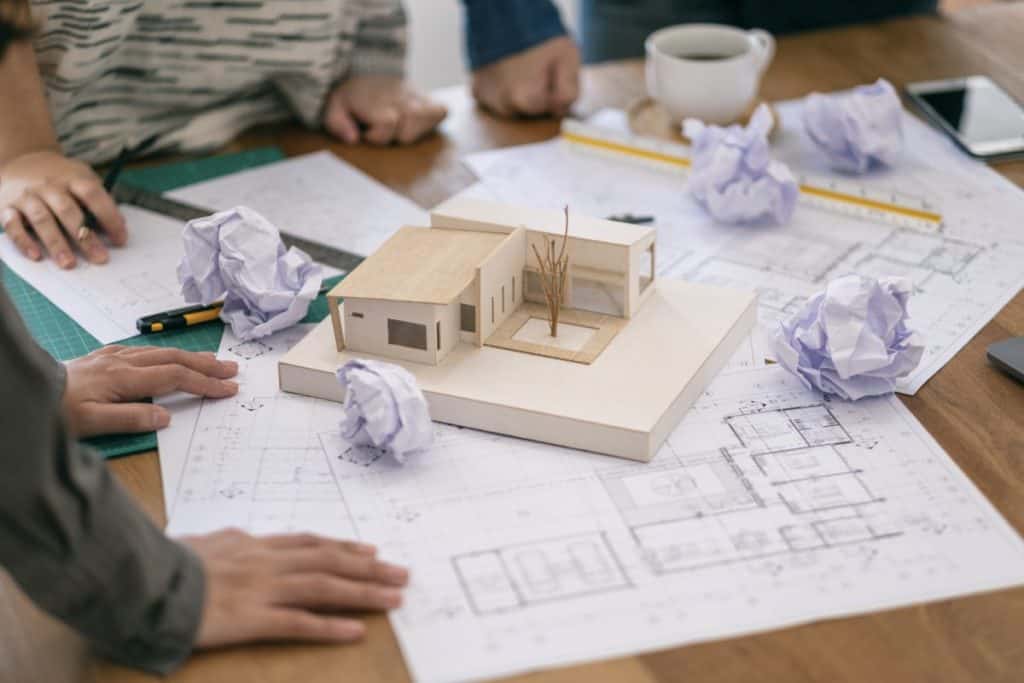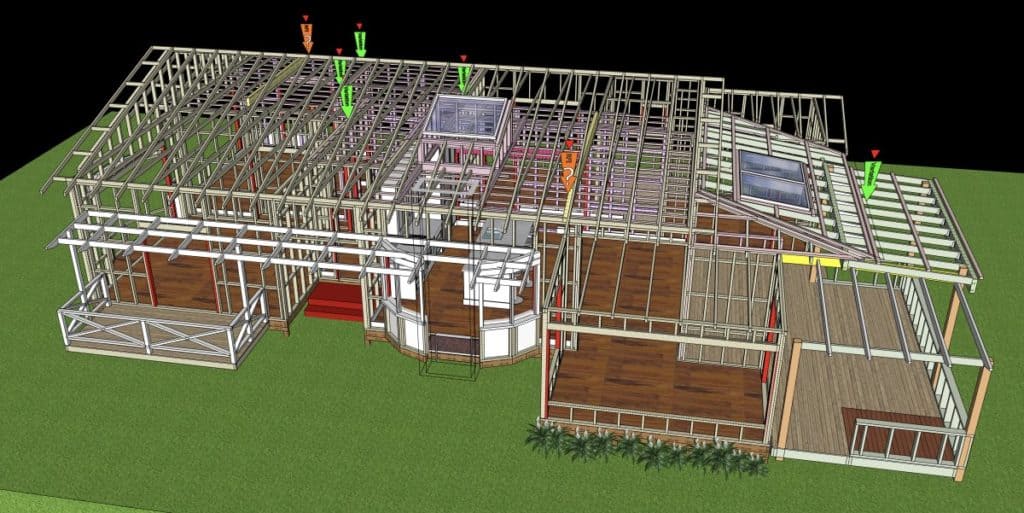THE OLD SYSTEM
Are you going to renovate your forever family home? Will you be wagering a 25 -30- year mortgage or a lot of savings, and a lot of hard work? Maybe a combination of all three? Emptying your emotional bank account in achieving your dream home?
The typical and traditional way of renovating or building in New Zealand, is to get plans drawn up by an architect or designer, who then will proceed to get a building consent. After receiving the building consent, a few selected builders are asked to quote. Assuming everything goes to plan, you will have one of the quotes return a favourable number, which you will accept, sign a contract and the building process starts ….. together with the nightmare.
There are plenty of other homeowners who will sympathise with your frustration, complaints and experiences. Problems such as communication, budget, variations, time delays, arguments with the builder, design clashes or mistakes. The list is endless. The “good news” is, you are not alone.

Let us start at the beginning. You decide to renovate, remodel or add to your home. You engage an architect or designer to draw up the plans. After presenting your wish list and ideas to the architect, you eagerly await the concept design. The day arrives, and you have a great discussion with the architect about your dream home. The architect has some great ideas and suggestions that you happily accept. After the changes are made to the plans, you happily sign off on the concept plans and request the architect to proceed with the final drawings to obtain a building consent.

Finally you have a complete set of plans, and you contact various builders to provide you with estimates or quotes. As the numbers start to come in, one of two scenarios typically play out.
One, you realise that your dream home is beyond your budget. It is going to cost a lot more than what you have anticipated. Your options are to pay the architect again to come up with a different set of plans, or you decide to make use of a different architect, and the process starts again. Hopefully you only be paying, financially and emotionally, twice for the result you anticipated the first time. If not your dreams will end up with the other 80% of architect designed plans that never reach fruition.

The second scenario. You have received quotes that seem achievable with your available budget. The only problem: you receive three quotes but they are completely different. One is a single line on a letterhead, and is around the $175,000 mark. The second is broken down into trade packages, and quoted around the $285,000 mark. The third, a scope list was presented around the $215,000 mark. How are you going to compare prices? How do you know which quote or builder to trust?
Somehow you make a decision and sign a building contract based on the facts that you have on hand, advice from friends, family, the architect and a bit of gut feeling.
The selected builder is now going to run the project with you. You will be discussing the progress, other options and ways of doing things that are different from your initially approved plans. The builder might suggest “How about we change this? It’s not going to… We’ll make it look like this. We’ll save you some money or Will to be faster to ….. So we’ll get you in sooner. X, Y and Z”.
As the homeowner, the reasoning all sounds logical and a certain trust exists where you believe the advice given . Unfortunately, this advice ignores the reason why the plans were drawn the way that they were. The architect or designer is not there to help you remember. You and the builder don’t understand the flow-on effect of changing something and what the consequential impact on the renovation will be. All you hear is “It could be in faster” or “it could be cheaper”, and you agree, “let’s do it”. Invariably you get to a point where you realize why something had to be the way your initial plan specified it to be. These “changes” could be very costly to get your renovation back on track.
It is also possible that the builder spotted a design error made by the architect or the engineering designs and details do not complement the architectural designs.

Changes have to be made. Variations are inevitable, additional time and money will be spent. As required by the council, all changes have to be recorded officially and well documented. The architect, engineers and other consultants all come at a cost, followed by the builder’s invoice for additional materials and labour. Typically many builders will use variations to make up for the oversights in their original quote.
As time goes by, you are starting to get anxious as it seems that the progress is slow, when is this project going to finish? Why is the builder not responding to my messages or emails? You cannot see or understand what the builder is doing! You are paying his invoices, but you have no idea what is happening with the budget. You are totally at the mercy of your builder.

Finally, you reach the end of the project and you are financially, physically and emotionally drained. Your newly renovated home is beautiful, and you receive a lot of compliments. However, the dreamed and planned functionality is lost in time together with the promise of “On Budget & On Time”.
But it doesn’t have to be like that!
THE BETTER WAY
There is a much better way of renovating. In fact, you should enjoy it so much that you would want to do it, again and again. There is absolutely no need for a disaster.
Typically a building project has a pre-construction phase and a construction phase. In the broken-model, the main players in the pre-construction phase are the homeowner and the architect, while in the construction phase, it is the homeowner and the builder.
Avoiding the nightmare is quite simple – appoint a builder as your design consultant before you select your architect and then together, you, the architect, and the builder work as a team towards your dream home.

Architects train to challenge the status quo, and to push the boundaries, find a new way of doing things. Builders, on the other hand, want to build things in a more efficient way. The builder’s input during the design stages should be to help the architect design more practically and efficiently, and thereby, to stay within your financial comfort zone.
As the homeowner, you should advise the architect of your budget so that he/she can design with your budget in mind. Unless architects are daily and directly involved with building projects, their understanding of building costs, materials and labour, are limited. Builders deal with this daily and are used to keeping an eye on the budget. The builder will be able to keep an eye on the design and your building budget, and warn you when you are getting close to your limit—saving you from falling in love with a design that you cannot afford. Once the design has a building consent, the builder can finalise the numbers and present you with a detailed building proposal and a working schedule.

If the builder is not involved in the pre-construction phase, they don’t understand the importance of particular decisions and why certain types of selections were made. Because of this, they may want to make alternative suggestions to be more efficient. Consequently, time is wasted, trying to find solutions.
Buildability is of utmost importance. Seeing that the builder will be doing the actual building work, he together with the structural engineers and other required consultants input, will ensure that the design is buildable. At this stage, it will be a lot cheaper to change a few lines on paper rather than going through the costly process of Variations or Amendments during the construction phase.

As can be expected, a professional builder will have an effective communication system in place, where the whole pre-construction phase is recorded for future reference.

Additionally, at the end of the pre-construction process, you will know the builder. You will know if you can trust him as a person and if you can trust him with your project to do the right thing and to provide quality work. You will also have the opportunity to visit his other projects and see the way he works first hand.
Remember, at the end of the pre-construction phase, if you feel the builder is not right for you, you can always appoint another builder. At this point, you will be better educated about the building process and in particular, will have a much better understanding of your project. You will know if there are any design issues, and engineers and other consultants details will have been checked against the architectural design. You will have a work schedule and detailed proposals so you can compare apples with apples.
It is important that you carefully select the right builder. Construction has a lot of moving parts, a lot of moving people, a lot of stuff needing to come together in a particular time frame in order for a project to run efficiently. It can be a very stressful phase for a homeowner. A professional builder will be able to demonstrate the effectiveness of his process that will justify his fee.
As a member of the New Zealand Certified Builders and the Association of Professional Builders, NEDS Projects is uniquely situated and experienced to be able to offer you everything you deserve from a professional builder on the Auckland North Shore. Check out website at www.nedsprojects.co.nz, or contact us on 0800 633 370 for a no obligation discussion.
Planning a major home renovation can be very overwhelming and finding the right information can be difficult. To help you we have developed a free guide that is beneficial for anyone who is in the planning stage of a major renovation. I know you will enjoy it. It is packed with super-practical information covering 7 of the biggest mistakes made when planning a major home renovation.
Click on the link below to download the 7 Biggest Mistakes To Avoid When Planning Your Major Home Renovation.
Download our FREE guide and avoid mistakes that will cost you money and time on your renovation.


